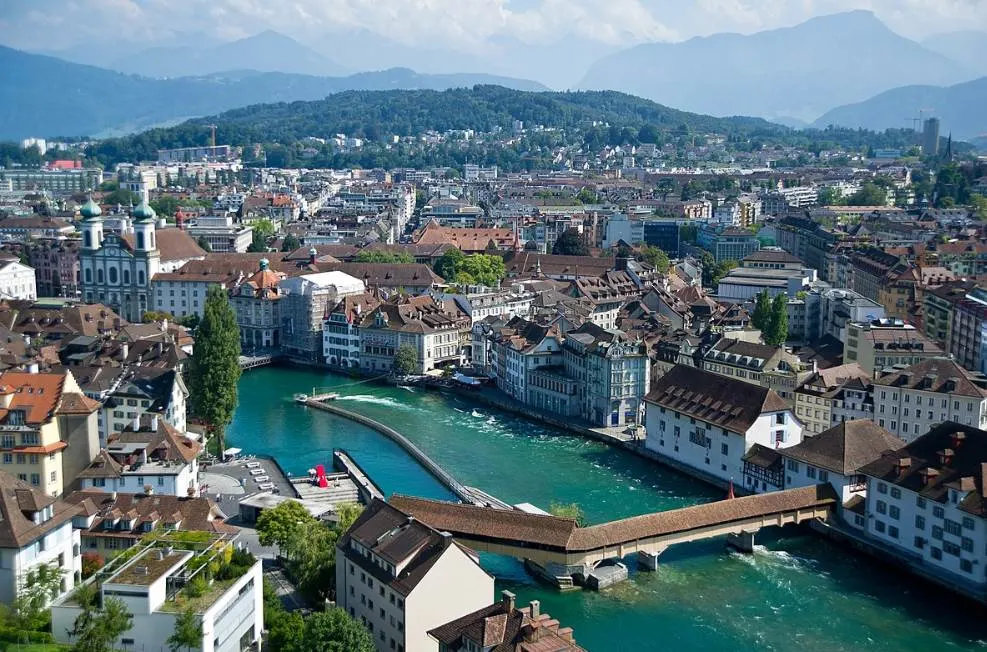Lucerne is a city in Switzerland that is situated on the western end of Lake Lucerne and approximately between Zürich and Bern.
The city was constructed on the banks of both the lake and the Reuss River, and one of the most famous bridges in the world crosses it near the city’s historical heart.
It’s hard to deny that it’s one of the most picturesque bridges you’ll ever come across, and it has a remarkable history as well.
In this article, you’ll discover some of the most interesting facts about the Chapel Bridge (Kapellbrücke), a building in Switzerland that holds some remarkable records.
1. It’s located in the heart of this beautiful city in Switzerland
The Chapel Bridge is locally known as the “Kapellbrücke” and is a medieval pedestrian bridge in the heart of Lucerne. It was named after the nearby St. Peter’s Chapel.
It’s the capital city of the canton of Lucerne and is a relatively small city with a population of just over 82,000 inhabitants.
The city has a rich history though and even became a city-state during the 15th century as part of the larger Swiss Confederacy.
The city was fortified during the Middle Ages and city walls were constructed. The Old Town of the city has been well-preserved and it has served as a popular tourist destination for many decades.
The bridge connects the Old Town of the city near the mouth of the Reuss River with the opposite bank. Apart from the Old Town, the magnificent Luzerne Culture and Congress Centre is located just nearby as well.
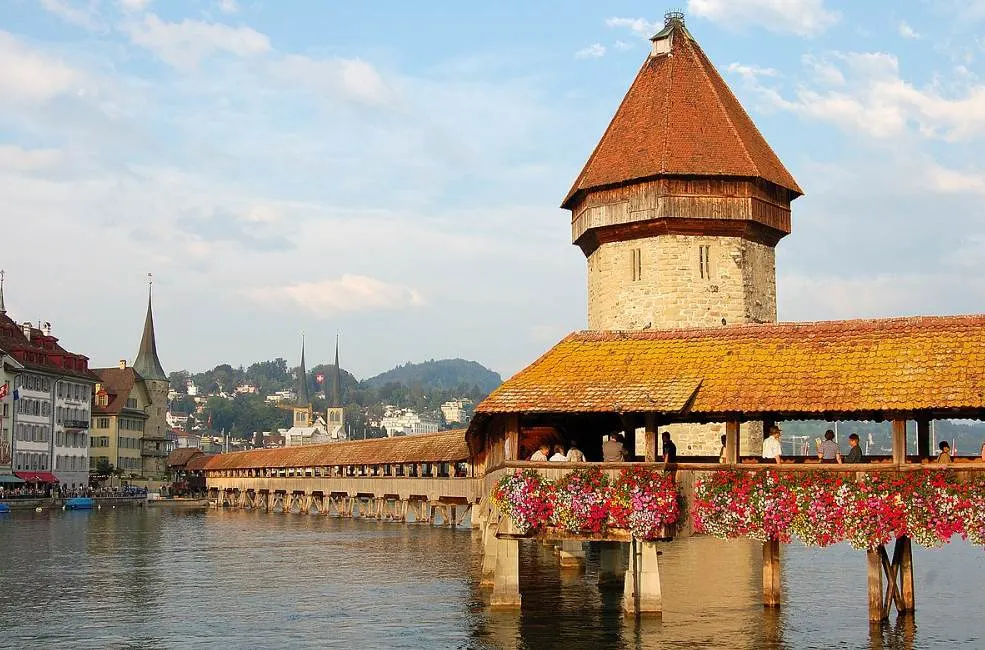
2. The bridge was constructed during the 14th century

The bridge was constructed in 1365 as part of a larger fortification project in Lucerne. It linked the main town at the time with the left bank of the Reuss River.
This was a new section of the town at the time and ensured that Lucerne couldn’t be attacked from the south and from the lake.
This made this covered wooden pedestrian bridge one of the most important structures in the city. Today, it’s a symbol of Lucerne and one of the city’s major attractions.
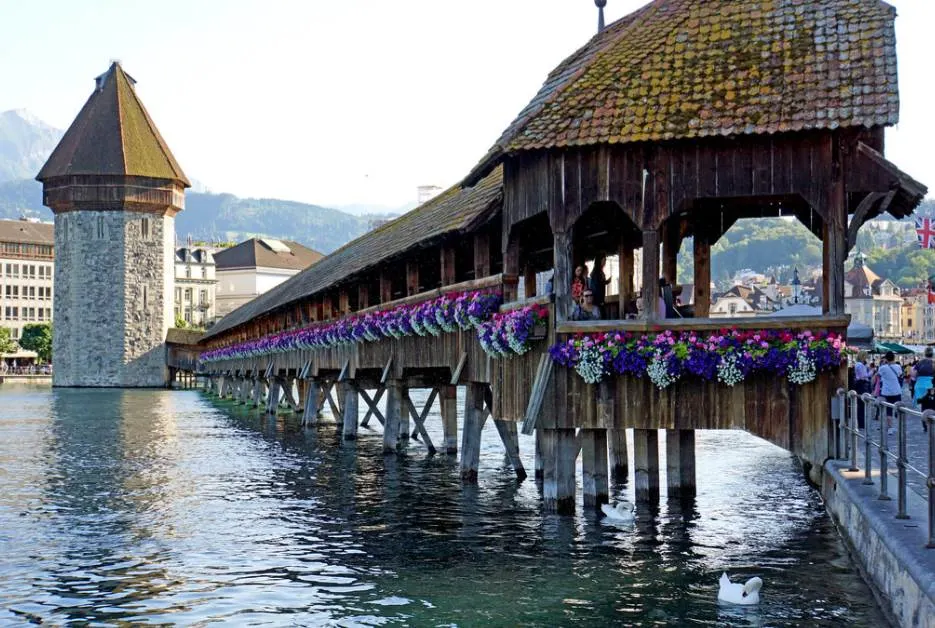
3. The most prominent feature of the bridge is 3 decades older
The most prominent feature of the bridge is the stone tower that dominates the view in this part of the city. This is the so-called “Wasserturm” or “Water Tower.”
One of the most remarkable facts about the Chapel Bridge is that this tower is actually 30 years older than the bridge itself.
When you first came across this structure, it does appear to be somewhat out of place because it’s not actually an integral part of the bridge, nor does it have a structural function.
This octagonal tower stands 34.5 meters (113 feet) tall and has been used for a wide variety of purposes throughout its history.
Some of its most notable functions were a prison, a torture chamber, the municipal offices of Lucerne, and the treasury. Today, it’s closed to the public except for the gift shop that is located in it.

4. How long is the Chapel Bridge (Kapellbrücke) in Lucerne?
Another remarkable fact about the bridge is that it was initially quite a bit longer than it is today. upon completion, the Chapel Bridge was 270 meters (890 feet) long.
Because some land has been reclaimed and restructuring projects were completed in this part of the city, the bridge only has a length of 204.7 meters (672 feet).
The truss bridge is supported by 20 wooden piers and 8 stone piers and therefore features 27 spans.

5. The bridge holds two remarkable records
The entire bridge is supported by triangular trusses. Because it was completed in the year 1365, this means that it’s the oldest surviving truss bridge in the world.
The entire structure rests on the trestles that are supported by the piers inside the water. This was quite a revolutionary design during the Middle Ages.
The other record that this particular bridge holds is that it’s the oldest covered wooden bridge in Europe.
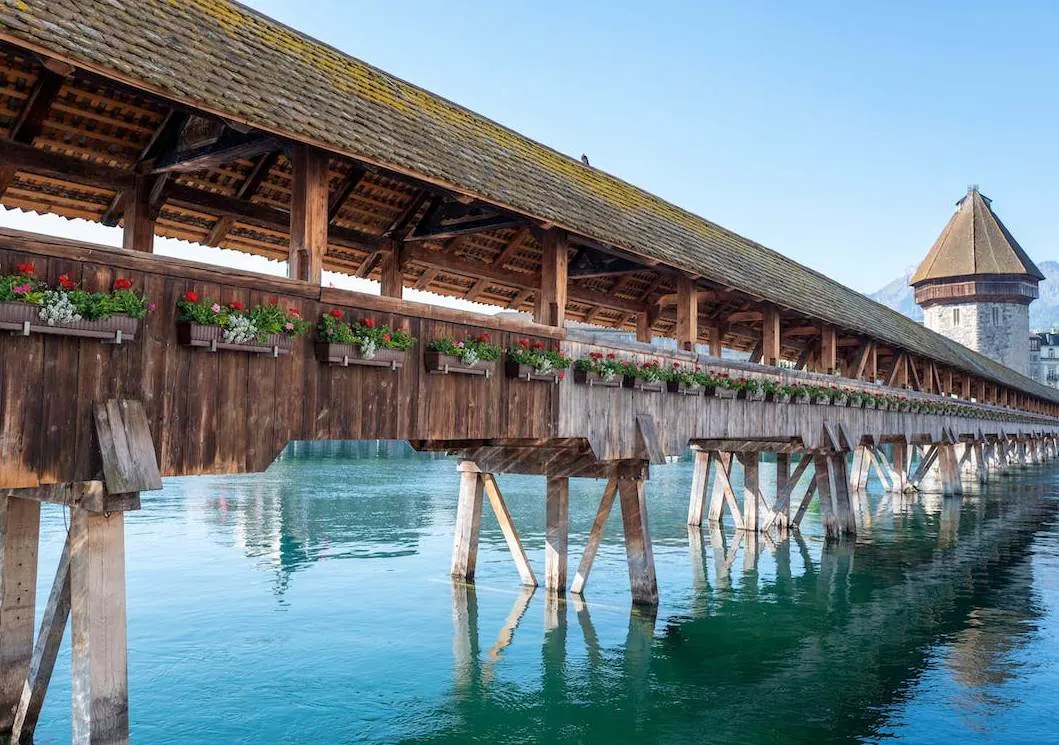
6. The original bridge was partially destroyed by fire in 1993
Unfortunately, large parts of the Chapel Bridge were destroyed by a massive fire that erupted in 1993. Almost the entire bridge burned down on August 18 of that year.
The Swiss didn’t mess around because they spent CHF 3.4 million to instantly rebuild the bridge to its former glory.
This project didn’t take too long because the bridge already opened back to the public on April 14, 1994, less than a year later.
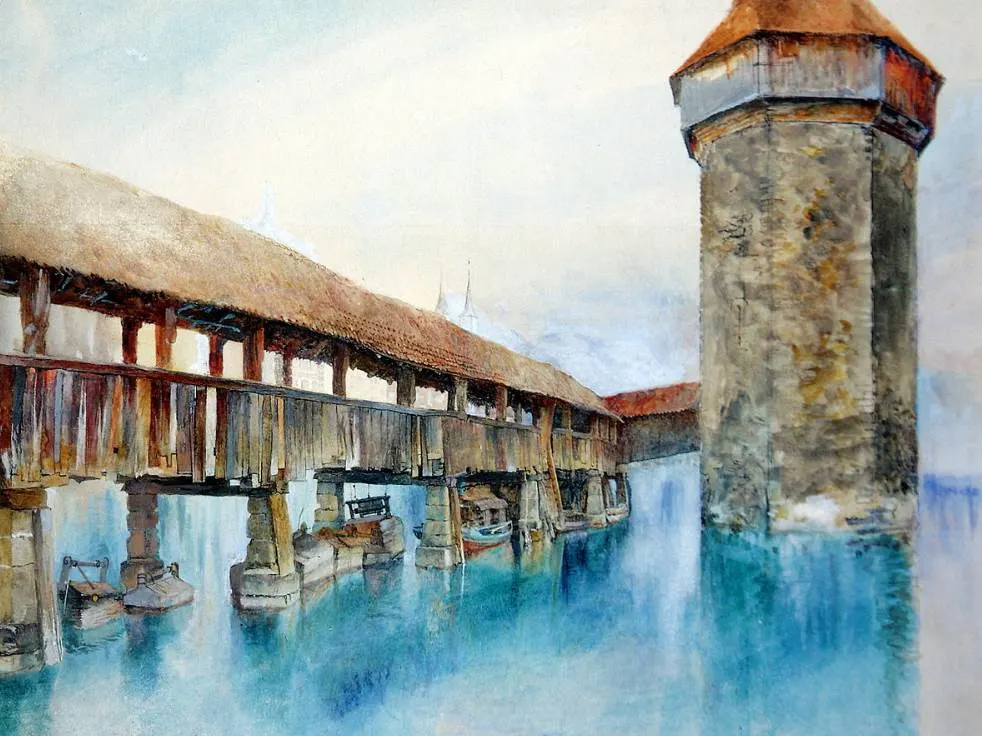
7. The most notable features of the bridge are the 17th-century paintings inside
Arguably the most remarkable features of the bridge are the 17th-century paintings that decorate the triangular frames inside of it.
The main concepts of these paintings are the history of Lucerne, the patron saints of the city, and the history of Switzerland as a country.
There is no other bridge in Europe that has these types of paintings and although about 2/3 of them were destroyed by the 1993, several have been preserved and many have been restored as well.

8. It’s one of three wooden bridges in the city (one was destroyed)
The story about the Chapel Bridge paintings doesn’t end there. This bridge is one of three bridges that were constructed in the city.
The 14th-century Hofbrücke has been destroyed but the 16th-century Spreuerbrücke still exists today and features the same type of paintings.
These paintings were completed on spruce wood boards with dimensions of 150 x 181 centimeters (59 x 71 inches) in width and 85 x 95 centimeters (33 x 37 inches) in height.
Crossing the Reuss River on both of these bridges should be the first thing on your bucket list when you plan to visit Lucerne, that’s for sure!
